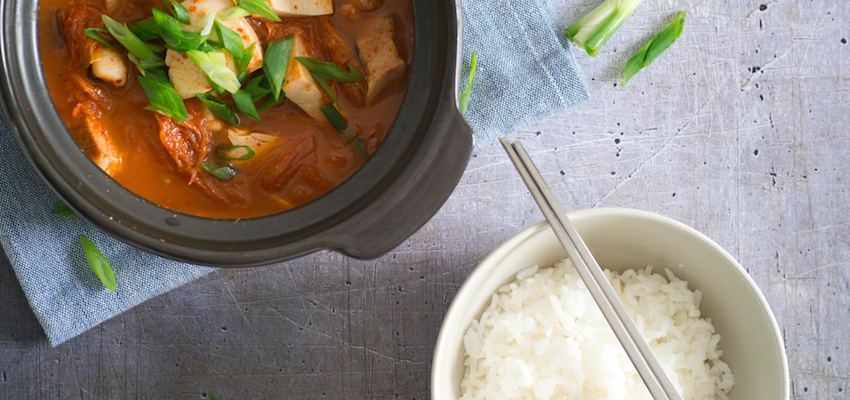5 Ways To Integrate More Fermented Foods Into Your Diet

If it seems like talk of fermented foods is everywhere these days, you’re right – and for good reason. The beauty of probiotic-rich fermented foods? They’re active! They aren’t just going to occupy that prime real estate in your belly; they’re going to work to balance your gut bacteria, improve digestion and in turn, make elimination a whole lot easier.
Getting more fermented foods into your diet isn’t a difficult task. In fact, instead of grabbing a nutrient-stripped pasteurized jar of sauerkraut off of a grocery store shelf, you can make your own gut-healing sauerkraut or any fermented foods and incorporate them into your diet. Here are five ways to get you started:
1. Ferment your smoothie
Don’t worry – it’s not as scary as it sounds. However, if the idea of adding fermented foods to your daily smoothie makes your stomach somersault, I might suggest starting off by incorporating them gradually. If adding a few fermented beet slices and a splash of beet juice isn’t for you, try using a fermented protein powder that supports healthy gut bacteria.
2. Kombucha cocktails
If you’re going to enjoy a cocktail or two, why not sip on one that will actually build your health? Kombucha’s composition of brewed tea, water and natural sugar mixes with other health-building ingredients or an organic alcohol beautifully. Soak up the beneficial bacteria and vitamin B12 kombucha has to offer by adding juiced lemon, ginger root, nutmeg and maple syrup. Bonus: It tends to be less acidic when you make your own kombucha from scratch.
3. Add miso paste to your vegetable stock
Miso, made from fermented soybeans, is a brilliant ingredient to use in a variety of recipes, though I tend to enjoy it most in a zinc and antioxidant packed vegetable stock. Simply add 1/3 cup of miso paste to your homemade broth and slurp up that fermented goodness while promoting a healthy pH in the digestive system.
4. Hide kimchi in your favorite dishes
There’s a reason why the average South Korean consumes approximately 40 pounds of kimchi every year. The process of fermentation alone gives kimchi it’s delectable taste while creating good bacteria, lactobacillus, which keeps the intestinal flora in a healthy state. This traditional fermented Korean side is made with cabbage, radish or cucumber and can be eaten on its own, in a veggie rice wrap or as a kimchi fried rice dish.
5. Enjoy coconut kefir yogurt for breakfast or dessert
Imagine a sweet treat that didn’t lead to a crash or hunger just minutes after? Coconut kefir yogurt is high in protein, both dairy and sugar free and of course, incredibly probiotic-rich. Enjoy it with gluten-free oats or a wild berry crumble. Your taste buds and your gut will thank you for this one!
Photo Credit: Stocksy
Comments
Post a Comment